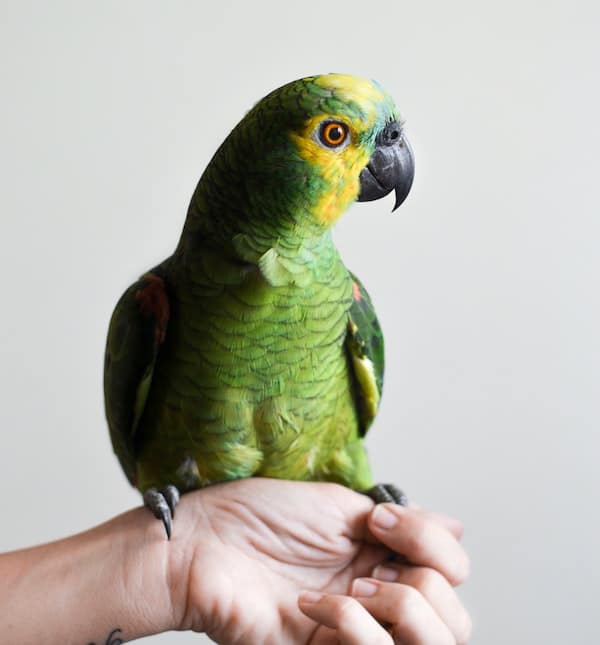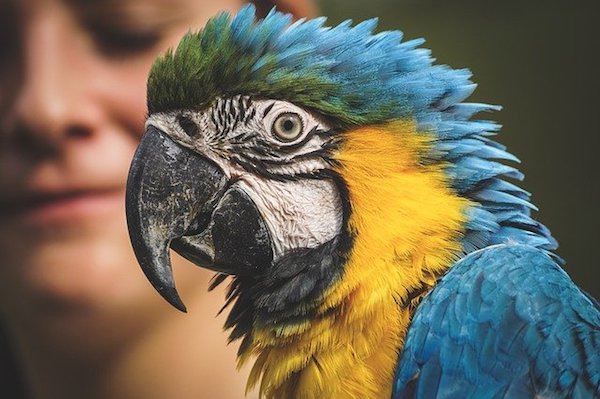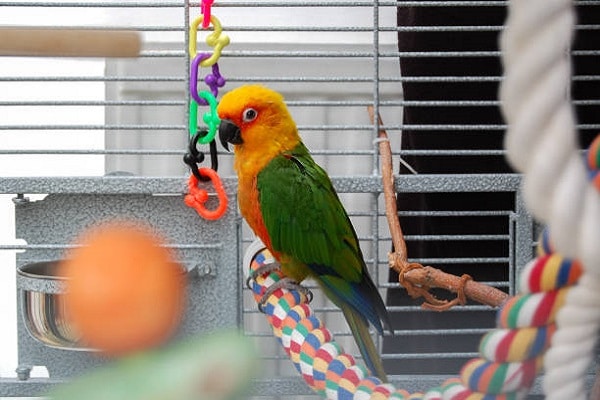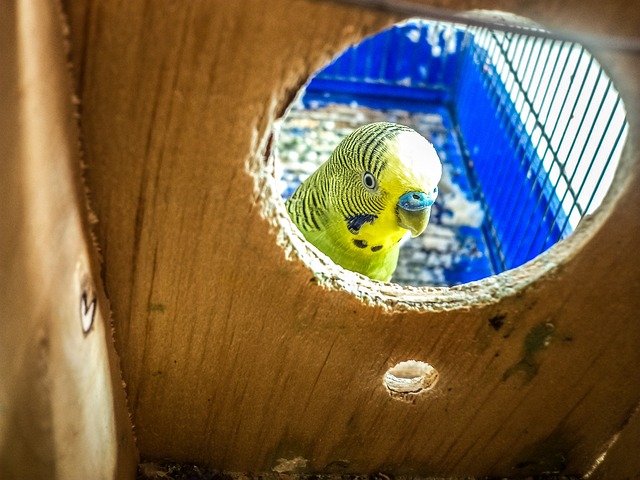
Birds make terrific pets and companions. They are colorful creatures, both physically and in behavior. Birds can be very entertaining.
The most common birds that are kept as pets indoors are tropical species of parrots and parakeets. These are also referred to as hookbills because of their uniquely hook-shaped beaks or bills. There are many varieties of parrots. The most common ones that are adopted as pets are Amazon parrots, budgerigars, cockatiels, cockatoos, and macaws.
There are also outdoor birds that many take in as pets. Some of these are workers of the land. Peacocks and flamingos are flamboyant show birds that enhance the landscape with their bright colors. Chickens are valuable for their production of eggs. And, guinea hens are useful in keeping tick populations down in a yard. Outdoor bird pets don’t generally require as much care as indoor varieties.
Let’s concentrate on the most popular indoor pet birds that live in cages and depend on you for feeding them and properly cleaning their habitats.
Lifespans of Birds in Captivity
Amazon parrots are extremely popular pet birds. They are native to Latin America and the Caribbean islands. These birds are medium in build and don very colorful crowns of feathers. They do require a roomy cage for comfort. Amazon parrots have lifespans of between 40 and 70 years in captivity when cared for properly.
Budgerigars or budgies are parakeets that live naturally in the open and wooded areas of Australia. These birds are on the smaller side and come in a variety of colors, such as blue, green, white, or yellow. Budgies have a short lifespan in captivity. They average about 7 years.
Cockatiels are small parrots that are also native to Australia. These birds are very common house pets. They are mostly gray, white, and yellow with varying feather patterns. Cockatiels are often bred with other species resulting in different hybrids. They can live to be 15 to 25 years old.
Cockatoos are larger-sized parrots. They are mostly found in the wilds of Australia, Indonesia, and Papua New Guinea. These birds thrive in the densely foliated and wet rainforests. There are 21 species of cockatoos, many with vibrantly colored feathers and majestic headdresses. Cockatoos can live a remarkably long time in captivity. The average lifespan is between 40 and 70 years. However, some can live to be 100 if cared for meticulously.
Macaws also live in rainforests, mostly in Central and South America. There are 17 species of Macaws. These birds are stunningly colorful, making them prized pets. They have long tail feathers that are also colorful. While macaws can live to be over 70 years in the wild, their lifespan in captivity is closer to 45 years. That is still a long time for a pet.
What Factors Impact a Pet Bird’s Lifespan

Pet birds rely completely on their human owners to care for them responsibly and with love. A nurturing environment is important, just as important as understanding the science behind the needs of the individual species. Before you decide to purchase or adopt a pet bird, here are some things to consider when caring for them to ensure a healthy and long life.
Safety First
Just like you would care for a curious toddler, you need to provide a safe environment for your bird. Always keep in mind that these are creatures that can walk and fly, and they need to do both to play and exercise their muscles, bones, and organs.
Give your bird an area where they can move about without encountering dangerous obstacles. Dangerous obstacles include ceiling fans, hot stovetops, cats and dogs, chemical cleaning agents, and bowls of human or pet food left out on counters and floors.
You should speak with your specialty veterinarian about routine wing trimming and maintenance.
Proper Nutrition
Your pets deserve a healthy diet as much as you do. While there are a variety of feed pellets that contain many vitamins and minerals, birds are wired to eat fresh food, such as fruit, leaves, and insects. These offer natural immunity to various diseases and illnesses. Even though your bird isn’t exposed to the outdoors all the time, sickness can lurk inside your home.
It is prudent to research what foods your particular pet would be eating in nature so you can supplement the packaged products. Foods that contain fiber will help to keep your bird’s gastrointestinal system functioning as intended for proper elimination.
Hygiene
You aren’t likely to go for days or weeks without cleaning up after yourself. Keeping your home clean ensures that you will not be exposed to bacteria and viruses. Just like you flush the toilet after using it, clean your pet’s cage of fecal matter regularly. This not only benefits your pet; it also ensures you are no susceptible to any microorganisms if your bird does come down with an infection. Wear gloves when you clean your bird’s cage.
If you have come down with a cold or flu, minimize contact with your bird or wear a mask. And, always wash your hands before and after handling your pet.
Visit the Vet
It is very important to do annual check-ups with a skilled veterinarian who understands the avian species in captivity. A bird might not know how to express her discomfort to you if she is unwell, so make sure you have her checked out periodically, especially if she seems lethargic. You don’t want to let your sick pet suffer because you skipped a routine health visit.
Play with Your Bird
Interaction is important for the well-being of your pet bird. These are very smart and social beings. Talk to your pet. Acknowledge him or her often. Take them out of their cages for playtime and exercise. Be compassionate and empathic by thinking about what it would feel like for you to be confined in a small space all day. This will make for a happier bird with a good long life.
Conclusion
A pet bird can bring so much joy to you and your family. They are whimsical, colorful, and engaging. However, they do need to be cared for properly to ensure a good, healthy, and long life. Following these suggestions and tips will only benefit you and your pet. Proper care can enhance and prolong the life of your pet bird.




